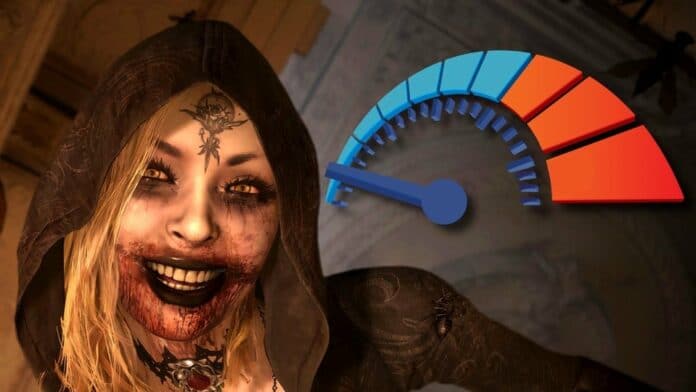DRM measures in Resident Evil: Village are currently making headlines because of sometimes major performance problems. But why is this only now becoming an issue?
Update, 20 July: Capcom has meanwhile released the announced patch. Judging by the first tests, it really solves the performance problems described in the article, so there are no frame rate drops when killing enemies or in the aforementioned boss fight.
An important update for Resident Evil Village players on Steam:
– FidelityFX Super Resolution (FSR) from AMD is now supported. FSR supports higher frame rates on PC for an improved gaming experience.
– Adjustments have been made to optimize the anti-piracy technology.— Resident Evil (@RE_Games) July 20, 2021
Original news, 19 July: Copy protection solutions are repeatedly suspected of causing noticeably poorer performance in games. The most recent example is Resident Evil: Village, where DRM measures by Capcom are said to be the problem.
On the one hand, the result shows that the performance problems on the PC can partly disappear without a crack. On the other hand, there are quite plausible explanations for the fact that so many players, including ourselves, have not noticed the difficulties.
The initial situation: What is the problem?
The bone of contention is a cracked version of Resident Evil: Village. It is accompanied by the claim of its makers that this version would in part significantly improve the performance in the game or that DRM measures by Capcom are responsible for performance problems.
The story gained even more momentum after Eurogamer and Digital Foundry respectively examined the performance with and without crack. The result: the performance problems mentioned below, which occur without crack, have disappeared with crack.
– In fights with normal enemies, especially when firing a weapon, there are always short drops in the frame rate when we kill them with it.
– In the boss fights, the FPS sometimes drops significantly when we have to deal with an opponent who is gathering a swarm of insects around her (see also the following picture)
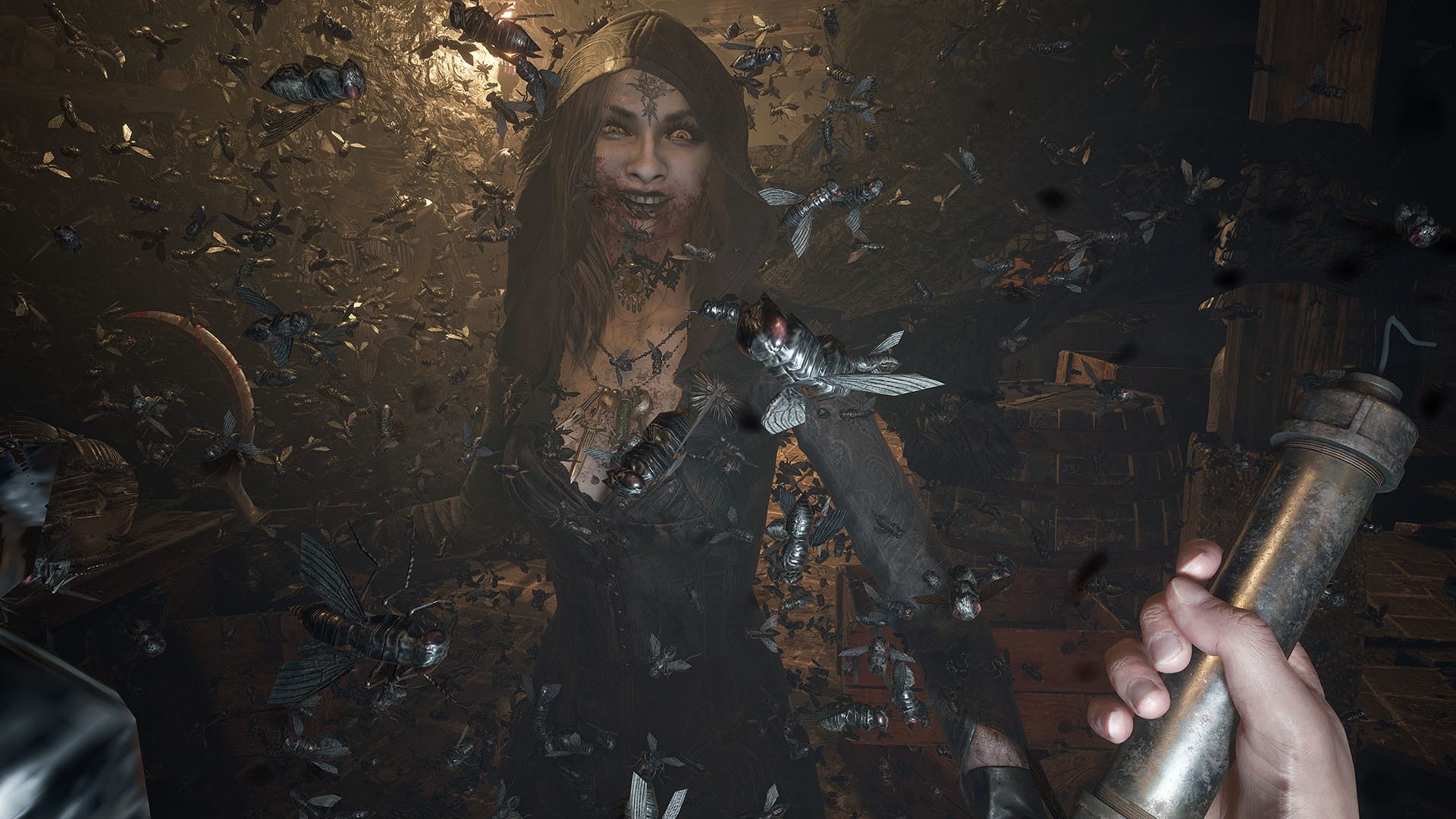
Digital Foundry’s new test uses a Core i9 10900K in combination with a Geforce RTX 3080 in 4K resolution, but they had already noticed the difficulties with other hardware as well.
The post-test: Can we confirm the problems?
We watched the scenes shown by Digital Foundry ourselves with identical hardware and settings as well as with a completely different system in lower resolution and detail level and can confirm the difficulties.
Frametimes in normal combat
The following graphs show the frame times in normal combat with both systems. Each point on the line represents the duration of the calculation of a single frame in milliseconds. If this calculation always takes 16.6 milliseconds, for example, this corresponds to 60 frames per second.
As the diagrams show, there are always individual outliers upwards, which become noticeable in a short stall when playing. The second test system with a lower resolution is slightly less affected by this, but the problems are also present here.
Test system 1
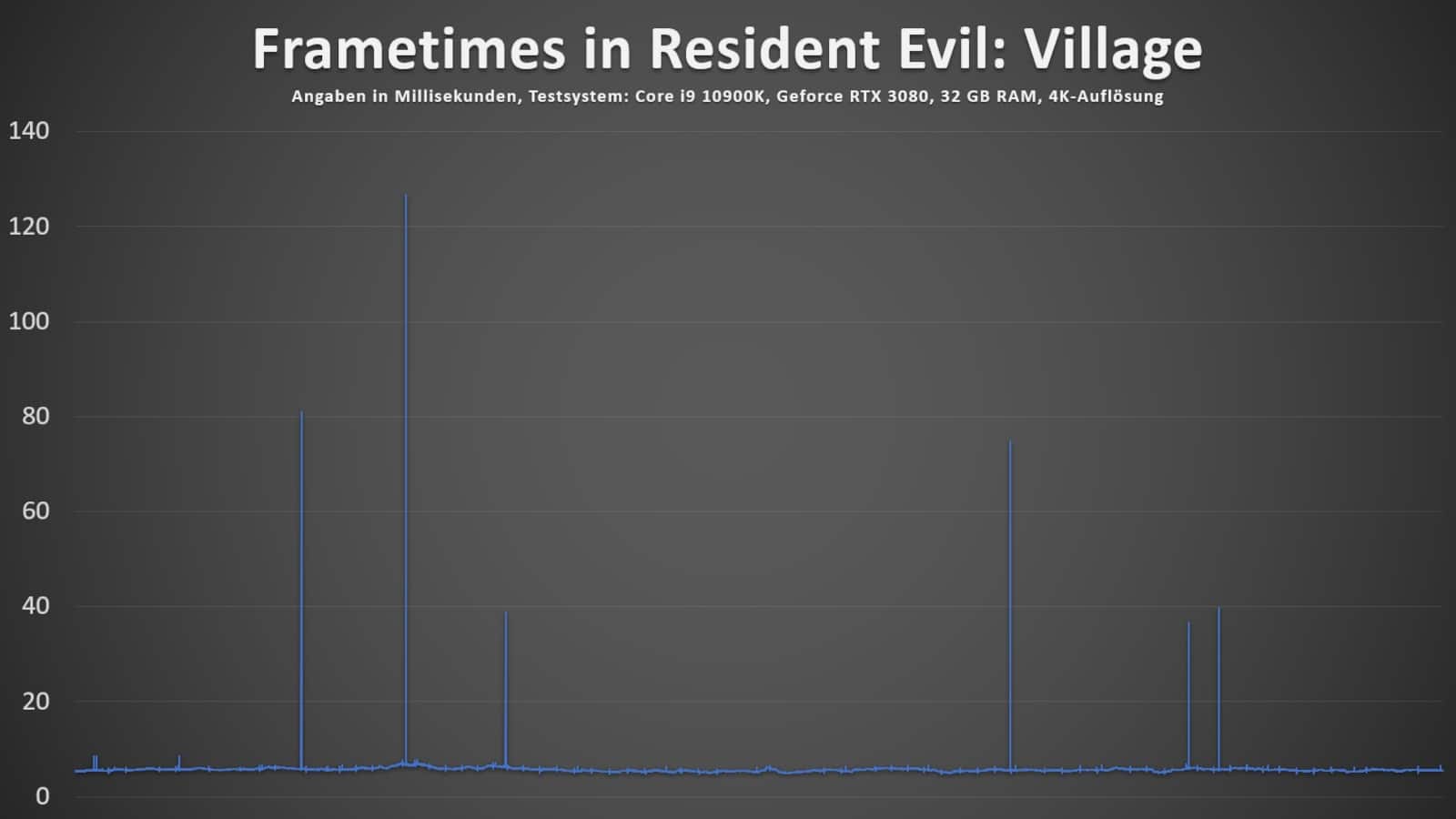
Test system 2
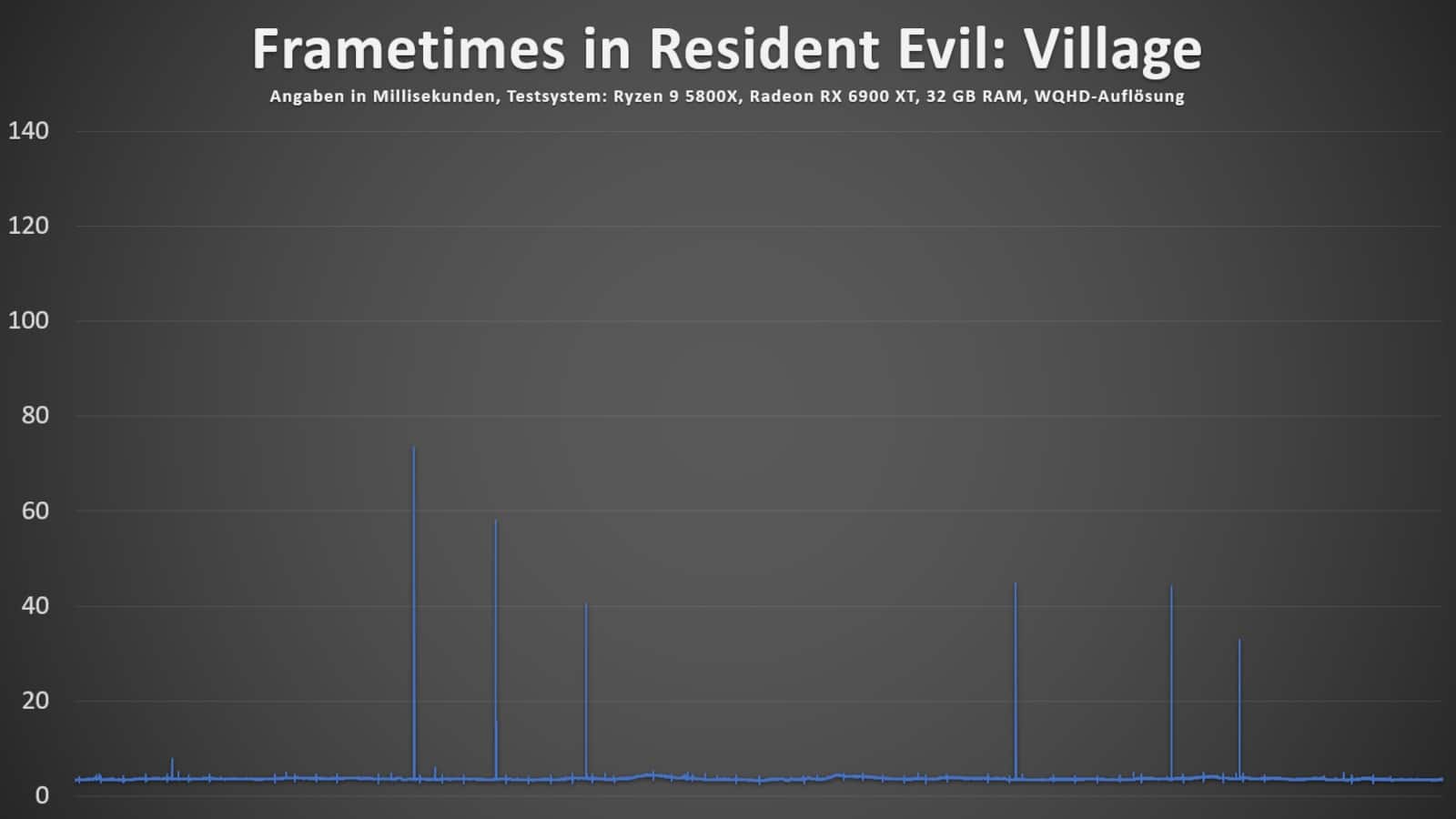
By the way, the frame times do not change when we play with a controller. So the problem is not related to the mouse and keyboard as input devices.
Frametimes in battle with the first daughter
The situation deteriorates considerably in the first fight with one of the daughters in the basement vault of the castle. This is mainly because the dropouts are longer or occur at shorter intervals.
In this case, too, the second test system is affected to a lesser extent, but it is by no means spared.
Test system 1

Test system 2

A (suboptimal) solution: It doesn’t have to be crack
We came across a very interesting solution to at least one of these problems by chance. To make it easier for us to progress in the game, we used the cheat Wemod, which, among other things, puts us into a god mode or prevents enemies from hitting us.
If this cheat is active in the normal Steam version of the game, there are still short jerks in the normal gun battles. In the duel with the first daughter on both test systems, on the other hand, they have practically disappeared:
Frametimes in the fight with the first daughter (God mode)
Test system 1
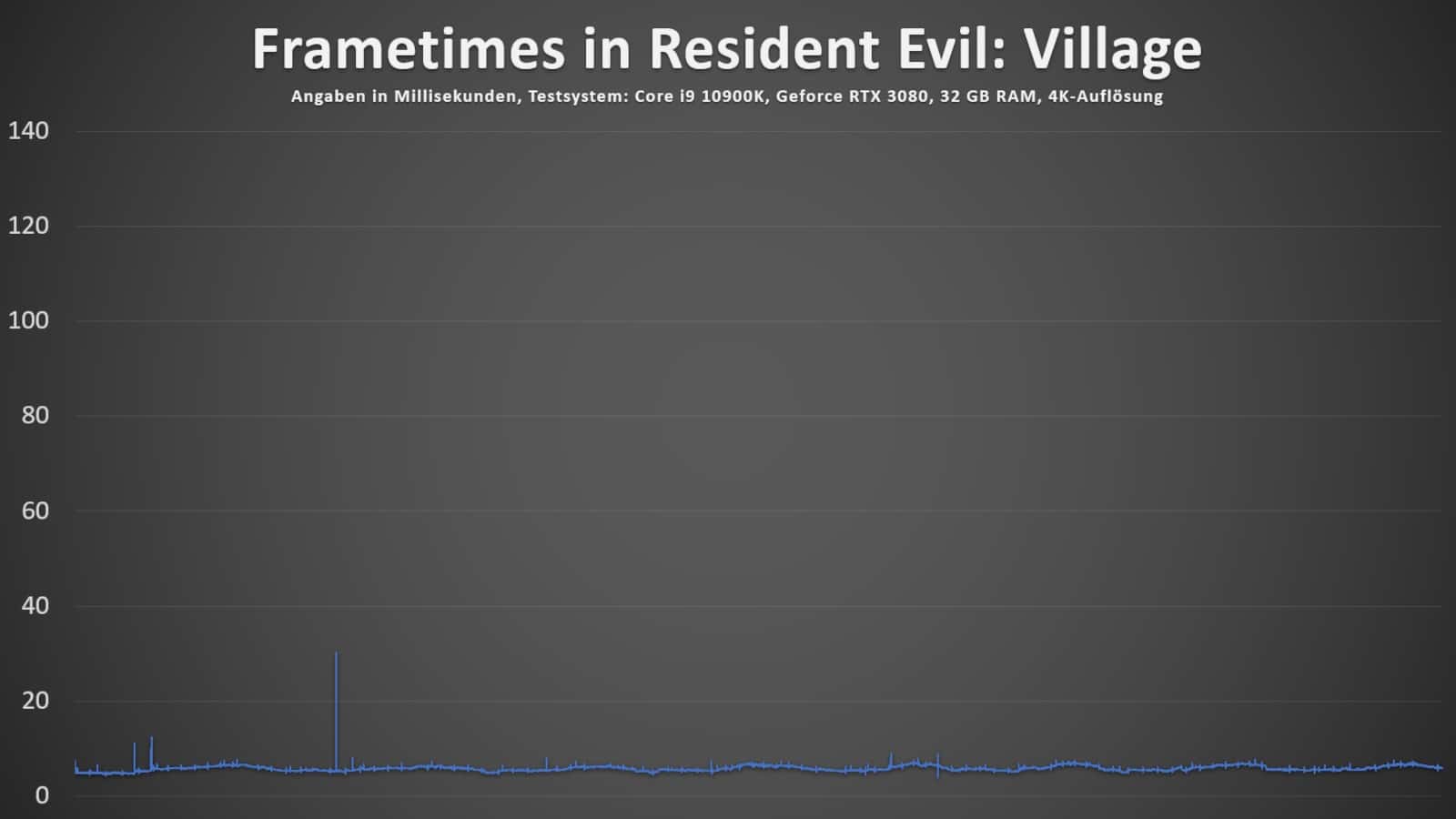
Test system 2
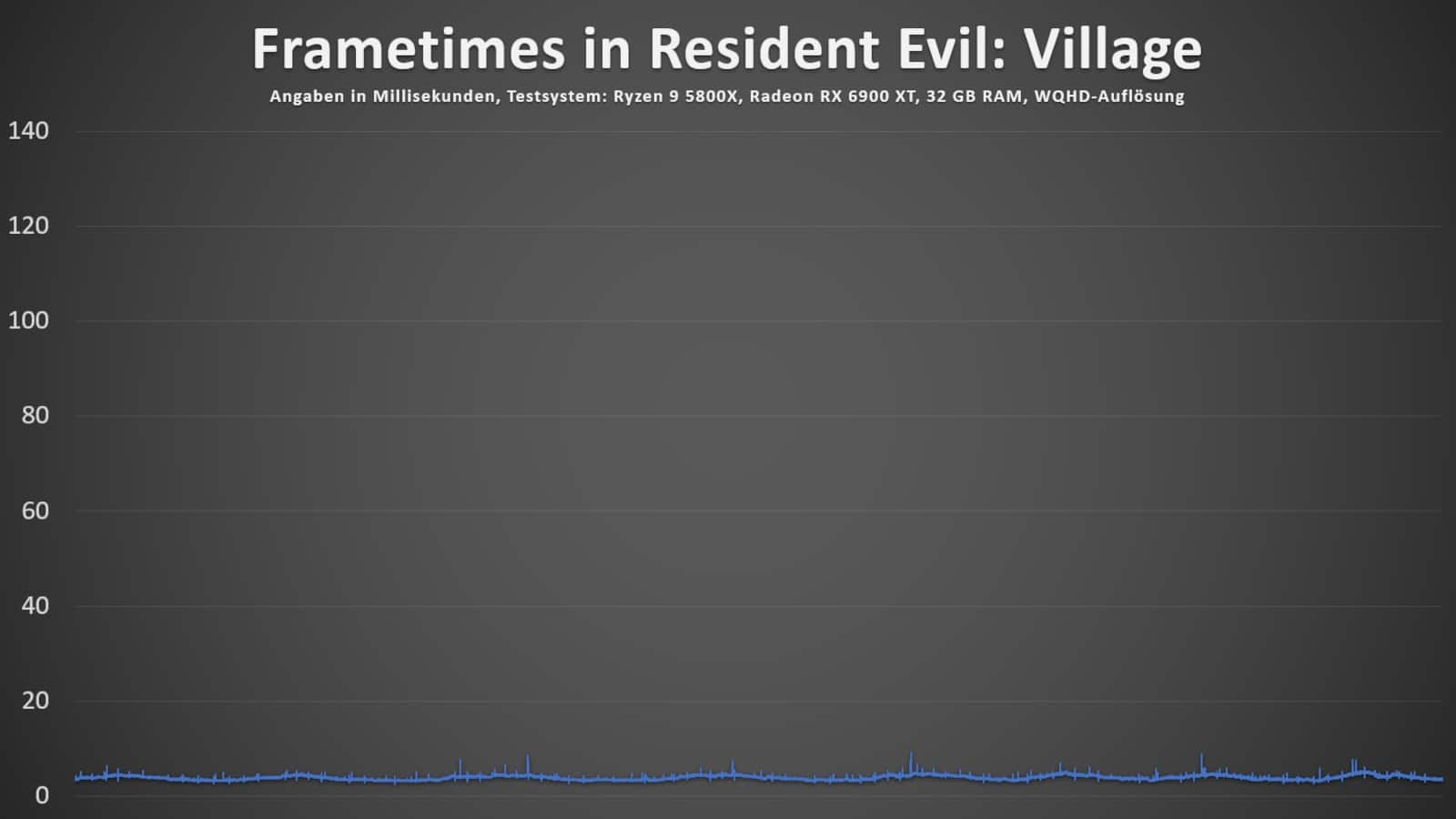
One conceivable explanation is that the attacks, including the swarm of insects, are linked to a trigger for the copy protection, which is cancelled out when we can no longer be hit. If such a trigger is also connected to the killing of enemies, it remains in place despite God Mode because we can still shoot them. Only the developers can know this for sure.
Moreover, the problems cannot really be solved cleanly in this way, because not every player wants to have to activate a cheat at times.
The big question: How can this be overlooked?
The performance problems shown in the frame times are quite serious, especially in the boss fights. Nevertheless, they were not noticed in our technology check on Village or by colleagues such as Computerbase or PC Games Hardware. In the Steam reviews, the game is also doing extremely well, with 95 percent positive ratings. How can that be?
The boss fights: In terms of fighting bosses, we think typical player behaviour is the most plausible explanation. Our own behaviour and various Let’s Play videos suggest, for example, that in the fight with the first daughter, you tend to pick up your legs and run away, instead of attacking her directly and repeatedly letting her get close to you, as is the case in Digital Foundry’s video. You have to do that to defeat her too, and in the actual main fight elsewhere the problems are much less, as Digital Foundry also shows.
The normal fights: The brief stalling during normal gun fights is a more difficult case, especially since such fights are much more common than the boss fights. We suspect that several aspects contribute here to the fact that few notice it. For example, we are dealing with very short frame drops, to which not everyone reacts equally sensitively and which have a different impact depending on general performance. In addition, the hit feedback in Resident Evil Village is generally rather spongy, which may mask the performance problems somewhat.
Our conclusion: What needs to change?
Whatever the question of what causes these difficulties and why many players don’t notice them, one thing is clear: they shouldn’t occur. This is all the more true because the console versions have no comparable difficulties. After all, according to Digital Foundry, a patch is said to be in the works:
Some good news: I've had word from Capcom that we should expect a patch soon to address Resident Evil Village PC's performance issues: https://t.co/8HvsF5BNjC
— Digital Foundry (@digitalfoundry) July 15, 2021
Equally clear to us, however, is that in the best case scenario we would have noticed these problems at the time of the release itself. As described in the article, there are, in our view, plausible explanations for why this did not happen, but they should not be excuses.
In the future, therefore, two things in particular must change: We have to look very closely at the frame times in typical game scenes in technology checks. And Capcom must get to grips with the problems of the PC version of Resident Evil Village.
What are your own impressions of Resident Evil: Village on the PC? Did you notice the performance problems while playing or were there no difficulties of that kind? Feel free to post it in the comments!

